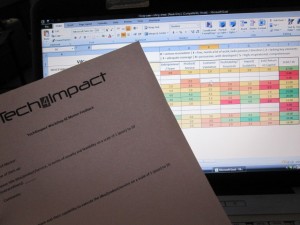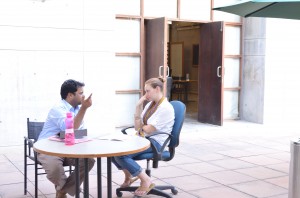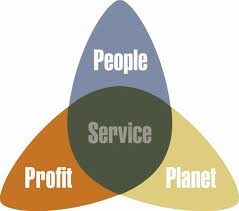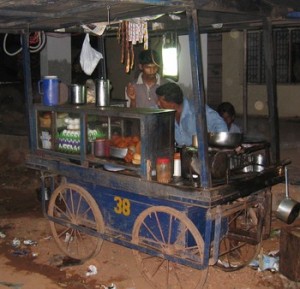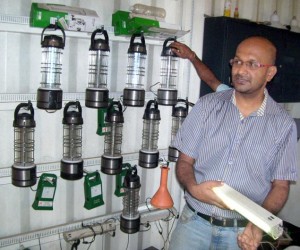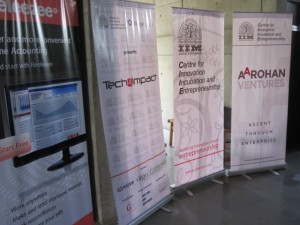 I had the pleasure to help organize and run the second installment of Tech4Impact, an accelerator program being run jointly by CIIE and Village Capital. Entrepreneurs go through a 3 month accelerator and are taught how to evaluate one another’s businesses, and multiple times during the program entrepreneurs publicly rank one another according to the Village Capital investment criteria. The accelerator focuses on technology ventures operating in the agribusiness, livelihoods, cleantech & sustainability, healthcare and sanitation, education and mobile/ICT.
I had the pleasure to help organize and run the second installment of Tech4Impact, an accelerator program being run jointly by CIIE and Village Capital. Entrepreneurs go through a 3 month accelerator and are taught how to evaluate one another’s businesses, and multiple times during the program entrepreneurs publicly rank one another according to the Village Capital investment criteria. The accelerator focuses on technology ventures operating in the agribusiness, livelihoods, cleantech & sustainability, healthcare and sanitation, education and mobile/ICT.
Entrepreneurs had the opportunity to speak with business professionals, mentors, customers and peers to shape their business model and develop their ideas. The ventures worked hard and had several 15 hour days using the time to meet with business professionals and refining their pitches.
Pitches were presented on the fourth day, where the ventures ranked their peers in regards to 6 categories: Team, Product/Service, Customer Validation, Profitability, Impact and Scale. Each category is ranked from 0 – 5, with a maximum score of 30. After the peer ranking, the top two enterprises from this round are: Sanchayan and Aakar. Sanchayan, delivers comprehensive financial planning, literacy & financial services like savings, banking, etc to low-income BOP populations. Aakar is producing a biodegradable sanitary napkin product for the BoP woman consumer sold by women in a hub & spoke model across India.
Personal Reflection on Workshop #2
The workshop ran fairly smoothly, but I would make some major changes. Firstly, it seems that the cohort doesn’t quite understand the criteria still which they are ranking each other on, which is an enormous problem. For example, the ventures did not present on an exit strategy, even though this is 1/6 of the grading criteria. I find this to be an enormous flaw. Another major issue is that the ventures are not able to properly quantify their social impact. In my opinion, too much time of the workshop has been spent on “MBA course-like” work – which can be supplemented by any incubator program. CIIE and Village Capital needs to do a better job at distinguishing their accelerator program by preparing the cohort better to pitch to impact investors. Lastly, I believe that this cohort needs to learn brevity when speaking about their enterprises. A diatribe about poverty in India is NOT the way to begin a pitch to investors and the cohort needs to learn perspective on audience.
Areas of focus for final workshop:
- EXIT STRATEGY!
- Social impact measurement
- Brevity in presenting
- More storytelling to convey mission and impact of business

